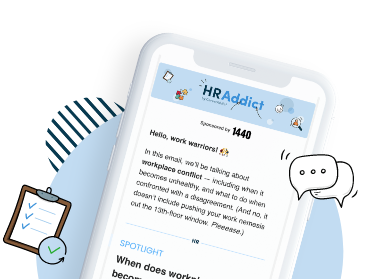Mentoring is an amazing career development tool, used by Fortune 500 companies and small businesses alike to develop employees and increase retention and engagement. And as remote working becomes more and more popular, so does remote mentoring.
Mentoring remotely might be born out of necessity; alternatively, it might be a mentee's preference. In any case, it has some fundamental differences to regular mentoring.
This article takes you over everything you need to know about how to mentor in a remote workplace, including the benefits of mentoring, and how mentors and mentees can make the most out of this extremely effective and rewarding development intervention.
What is mentoring?
Mentoring is a professional relationship where an experienced mentor guides a less experienced mentee in personal and professional development. Companies often match mentors with mentees as part of a professional mentoring model. Mentoring differs from coaching in that it offers a longer-term and continuous form of relationship-based learning.
How does it benefit your employees?
Mentoring is one of the most important development tools that employers use. As well as the organization benefiting from networking, it has huge benefits for employees. Here are some of the largest:
1. It provides long-term support
Mentoring goes beyond simple feedback or coaching. Its purpose is to provide long-term support to people. People who have mentors often keep them for many years and, in some cases, have one mentor throughout their whole career. The benefit of this is that it's not just skills that are developed during mentoring — it's the relationship.
2. It provides personalized development
Because mentoring occurs over a longer period, the mentor and mentee can work out rituals and programs to develop a highly personalized learning experience that coaching simply cannot offer.
Mentors should consider diversity and inclusion initiatives when planning mentoring inventions, taking into account learning styles, time constraints, as well as undertaking training needs analyses to ensure the mentoring relationship is aligned to the individual.
3. It helps employees expand their network
Mentoring is a relationship-based intervention, and a benefit of this is that networking opportunities organically arise during a mentorship. An effective mentor is typically an industry expert and extremely experienced.
With this expertise and experience comes connections... powerful ones. Often, mentors will be more than happy to introduce their mentees to these connections, contributing to effective leadership development.
4. It increases their confidence
The validation and feedback gained from remote mentoring can be invaluable for mentees, as this can be perceived as a safe space for candid interaction. New ideas and creativity can be discussed between the mentor–mentee pair without boundaries or judgment, which can be exceptionally empowering and increase job satisfaction.
Additionally, the best mentors not only provide practical and technical advice but also offer emotional support, engagement and motivation that day-to-day managers don't always give.
5. It provides career development opportunities
The ongoing nature of a workplace mentoring program means that it can keep pace with changing career goals, and learning can be adapted to the changing needs of career growth. Mentoring develops employees over time and offers tailored advice for various stages of their career. This can also improve employee retention for the company.
How to mentor in a remote workplace setting
Mentoring in a remote workplace setting is as effective as face-to-face mentoring, but it does require some special considerations. Here are 10 tips on how to mentor in a remote workplace.
1. Establish parameters
When undertaking remote mentoring, it's vital to establish clear norms. Any form of remote working requires carefully established remote communication rituals that are sustained in the absence of face-to-face contact. When setting up mentoring opportunities with your mentee, sit with them and discuss how your mentoring relationship will work.
Cover points like frequency of meetings, which video conferencing app will be used, response times, methods of communication, and expectations in terms of interactions and behavior. This establishes trust and routine, prevents overcommunication and burnout, and will be the bedrock of a productive mentoring experience.
2. Prepare your technology
Mentoring in a remote workplace setting is heavily reliant on technology. This can bring advantages and disadvantages, so it's vital that technology is set up and working correctly.
Before you begin your mentoring journey, consider using online mentoring platforms, and ensure that you have the right software installed (such as Zoom or Microsoft Teams) and that you have functioning hardware like a working camera and microphone.
Check that your mentee has similar equipment and is comfortable with the technology being used, and that they have time to ask questions or share concerns before the mentoring relationship begins.
3. Exercise patience
Any form of remote working intervention can lead to frustrations. This is because issues can be more complicated to resolve, fixing technology can take time, and physical barriers can increase anxiety. When mentoring people remotely, you need abundant patience.
Factor in time to deal with delays caused by miscommunication or technology not working, and when this inevitably happens, work through the challenges with your mentee calmly and clearly. This approach establishes trust and prevents small hiccups from becoming larger issues that might disrupt or derail the longer-term mentoring relationship.
4. Trust your mentee
A remote mentorship program will involve time spent away from your mentee. If you’re mentoring someone face to face, it’s easier to check in with them casually to see how they’re doing, whereas it’s more intrusive to call them or throw in a last-minute video call to gauge progress made on goals.
Trust your mentee to work on targets and projects. This might be easier said than done, but trust is formed through communication and structure, as well as committing to your end of the deal by holding meetings and setting waypoints throughout the mentee's professional development.
5. Use a variety of channels
Don’t just use video conferencing for a remote mentoring relationship. While this might be the most frequently used form of communication, there are different types of mentoring channels to consider.
Emails can be used to communicate important messages such as appointment changes, setting goals, or giving constructive feedback, whereas instant messaging services like WhatsApp are perfect for casual conversations.
Mix it up a little and establish different lines of communication that could be useful, outlining when they can be used. Constantly check in with your mentee to see if communication channels can be added or tweaked.
6. Make it fun
When considering how to mentor in a remote workplace, you must ensure the learning your mentee receives is fun. This follows key adult learning and development principles in ensuring your mentee retains the information.
There are many ways you can make remote mentoring fun. You could run polls, gamify e-learning, invite guest speakers, or switch roles around and have your mentee “mentor” you in something they recently learned.
Consider regular mentoring “side quests” like an online book club every month, where your mentee reviews an interesting article or book they read recently, or “six degrees of separation”, where you challenge your mentee to get from one learning topic to another in six online searches or less.
7. Set careful goals
Keep your mentoring relationship productive, and retain top talent by establishing powerful goals. These could be short- or long-term targets, but negotiate the format of the goals with your mentee and ensure they have the resources they will need to achieve them.
The best goals are ones that can be recorded and tracked, and feedback can be provided on their progress. These are often referred to as “SMART” goals, ones that are specific, measurable, achievable, relevant and time-bound. Review your mentee’s progress against their goals whenever you meet them.
8. Establish frequent check-ins
Consistency and regularity are critical when it comes to a remote mentoring relationship. As part of establishing a training plan, ensure that you and your mentee check in with each other on an ongoing basis.
When mentoring people remotely, one of the easiest ways for the relationship to break down or simply fizzle away is prolonged periods of inactivity or non-communication. Avoid this by ensuring you both speak — even briefly — each week, with more substantial check-ins scheduled and committed to in advance. This keeps the remote relationship tangible.
9. Encourage an occasional face-to-face meeting
While this will not always be possible, depending on the nature or context of the remote mentoring relationship, it’s helpful to hold face-to-face meetings whenever you can. Doing so will consolidate the mentoring relationship and establish a strong level of commitment that is harder to unravel if the remote mentoring work breaks down.
Even if you’re based in different cities, jump at opportunities to meet your mentee face to face, for example: if one of you is in the area for a vacation or a work-related visit. As a mentor, take the lead on this, and if the mentee isn’t keen on this form of interaction, don't force the issue.
10. Celebrate achievements
A remote mentoring relationship can fall into transactional blocks of work that focus on goals being achieved and progress being made. It’s, therefore, easy to forget celebrating wins and achievements, and as a mentor, you need to take the lead on this.
Celebrate “anniversaries”, like completing a certain number of meetings or a goal being achieved. You might choose to hold a little celebration online or even send an e-card or a gift voucher for larger achievements. Remember to appreciate your mentee for their hard work, and appreciate the time they invest in sustaining the mentoring relationship.
Key takeaways
When thinking about how to mentor in a remote workplace, consider the following key tips and takeaways:
- Mentoring is a collaborative and long-term development intervention, and its success lies in effective relationship management.
- When getting ready to mentor remotely, ensure you establish norms and parameters to build an effective relationship.
- Work variety and fun into remote mentoring moments; it will bring the experience to life and complement the lack of face-to-face interaction.
- Technology is an important part of a remote mentoring model. Ensure it's used considerately and properly to make the mentoring experience effective.
- When mentoring remotely, remember to carry over core principles of regular mentoring, such as trust, routine, goals, feedback and recognizing achievements.
Remember that remote mentoring is as effective as regular mentoring. The tips in this article will help you guarantee its success!
Got a question or want to share your own thoughts on remote mentoring? Let us know in the comments section below.
This article is a complete update of an earlier version originally published back in 2018.

